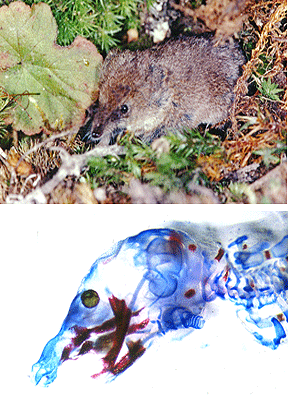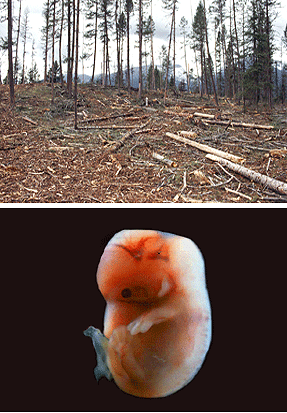Stress is a major factor in evolution, but for stress-induced modifications to have evolutionary importance they have to be inherited and persist in a sufficient number of individuals within a population. This requires an organism to survive stress and reproduce at least once; thus stress-induced variation has to be accommodated by an organism without much reduction in its functionality. How is such accommodation accomplished? Badyaev et al. show that complexity and cohesiveness of foraging structures of shrews enables accommodation of stress-induced developmental abnormalities in individual components of morphological complexes. Such developmental compensation and accommodation not only allow shrews growing under stressful environments to maintain locally adaptive foraging morphology, but also provide a mechanism for stress-induced evolutionary change. (Photos by the authors).

With their nearly continuous foraging activity and delayed ossification of lower and upper jaws (shown by different colors), shrews are ideal for the study of evolutionary significance of environmentally induced morphological changes.

Alteration of habitat by extensive logging resulted in nearly two-fold increase in the incidence of developmental abnormalities in shrew embryos and neonates.

Muscle complexes can accommodate stress-induced variation of their jaw attachment areas and thus retain their functionality under stress.